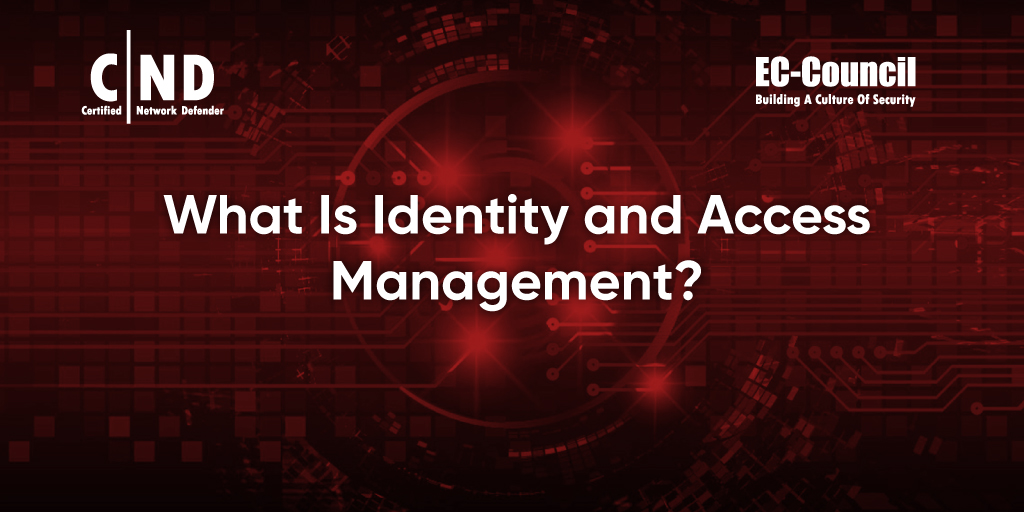Identity and Access Management (identity access management or IAM) is vital to any cybersecurity strategy. It’s also often misunderstood. Instead of being one activity, IAM is a practice encompassing technology, business processes and policies, and organizational techniques.
So, what is Identity and Access Management? It depends on the organization and its tools, but IAM encapsulates how companies control user accounts, passwords, and access levels. It’s a framework comprising several elements that manage computer system identities.
There are four components of an IAM system:
- User management
- Authentication
- Authorization
- Identity governance
Businesses use IAM because it gives them fine-grained control over users and access. Most companies have several electronic systems, applications, servers, cloud apps, and other resources that require privileged identity management. Access to sensitive data requires strict controls, and IAM systems are often the best solution.
Key Concepts of Identity and Access Management
All IAM systems, whether straightforward or complex, share key concepts like authentication and authorization. Authentication concerns how users can log on to an account, such as with a password or access token, while the authorization module controls which resources users can access.
Users gain authorization based on their role in the organization or their group. This makes authorization one of the most critical parts of an IAM system because it controls who can access which systems.
Identity governance is the other critical component of IAM, defining how an organization manages user roles and permissions. It ensures that users have the correct access level and provides methods to audit user access levels. The auditing function of user governance is crucial, as it allows an organization to validate its security and policies.
Benefits and Advantages of IAM
Thanks to their many benefits, Identity and Access Management have become a standard part of IT security strategies. Managing users, passwords, and system authorization can quickly become problematic, especially in large enterprises with many users and resources. However, IAM tames the complexity of these processes by providing a centralized method for user access control.
Organizations gain operational efficiency with IAM systems because they only manage their users and authorization levels from one location. Identity management also provides a framework for enforcing security and access control policies. For example, financial document and application access is typically limited to finance teams and high-level managers. Organizations grant access based on employee roles and group memberships, passing authentication and authorization responsibilities to the Identity and Access Management system.
Regulatory compliance is another benefit of this system. Compliance would be challenging to maintain and prove without IAM, especially in large organizations. Data privacy regulations require companies to protect user data privacy, and IAMs offer a standardized method to show compliance. Identity and Access Management systems also keep records readily available for auditing by providing access control mechanisms with paper trails.
The reporting capabilities of IAMs simplify the process of validating compliance with regulations and customer requirements. The alternative of trying to manage manual compliance and enforcement of security policies would be difficult, if not impossible, to maintain long-term.
Implementing an IAM System
Most organizations already have a basic identity management system, whether or not they recognize it as such. For instance, an LDAP (Lightweight Directory Access Control) directory or Active Directory server might provide centralized user and password management. However, these solutions often lack the comprehensive features of an Identity and Access Management system.
A successful IAM deployment requires careful consideration of the existing identity management or authorization and access control systems. As you develop an identity access management roadmap that aligns with your business goals, you must ensure it’s compatible with existing technology — or provide a smooth path to phasing out those systems.
As with most IT implementations, your organization would review proposals and sales pitches from multiple vendors. Keep in mind your company’s security strategy, regulatory and customer requirements, and ability to customize a system to suit your organization. The chosen solution should offer an integration strategy so current systems can work with the IAM.
Common Challenges in IAM
Organizations often struggle with managing their user identities as they implement an IAM. Most companies have user accounts for employees, contractors, customers, and external partners, among other types. Defining the roles and access around these various levels can be time-consuming and tedious until the IAM system is fully implemented.
Overcoming the challenges of IAM implementation can be seen as a balancing act. You are trying to manage security, external requirements like regulations, customer requirements, and the user experience. Assessing the minimum requirements for each side can help strike a balance.
The most successful IAM deployments undergo rigorous testing before being promoted into everyday use. A pilot program with your most technical users can give you valuable insight into how well the IAM system works. Communicating the reasons for the implementation and offering proper training will help smooth out the changes for end users. You could include a “What is Identity Management?” section in the training session to help explain why your company decided to implement IAM security.
Best Practices for Effective IAM
After conquering any implementation hurdles, it’s time to implement IAM best practices. This stage includes, if possible, implementing automated user provisioning and de-provisioning. As a feature in many Identity and Access Management systems, user provisioning and de-provisioning can help ensure the prompt granting and revoking of user access.
Implement stronger authentication methods in the IAM to increase your organization’s security posture. Some possibilities include two-factor authentication (2FA), biometrics, hardware tokens, and other traditional password options.
Continue to educate users long after your implementation, and expect that newly onboarded team members or users may still ask, “What is IAM?” Routine training keeps everyone up to date on what identity access management is and how IAM security benefits the company. A key component of IAM is enforcing your organization’s security policies. Users should know the policies and how your IAM fits the overall strategy.
Learn About Identity and Access Management (IAM) in the C|ND Course
Although implementing Identity and Access Management can take time, it’s the best option for businesses of all sizes. Managing user identities and access controls for multiple systems is not feasible with all of today’s enterprise apps and cloud services. Therefore, IAM is crucial for network security professionals to learn.
The Certified Network Defender (C|ND) course from EC-Council takes an in-depth look at IAM, IDM, and the different types of authentication and authorization enterprises use. Earning a C|ND certification prepares you for a strong career in network security by covering essential concepts like cloud, IoT, threat intelligence, and more. You’ll also learn about popular IAM systems, including AWS identity and access management.
To learn more about the C|ND, visit EC-Council’s course overview page and complete the form. Take the first step toward becoming a Certified Network Defender.
About the Author
Leaman Crews is a former newspaper reporter, publisher, and editor with over 25 years of professional writing experience. He is also a former IT director specializing in writing about tech in an enjoyable way.










